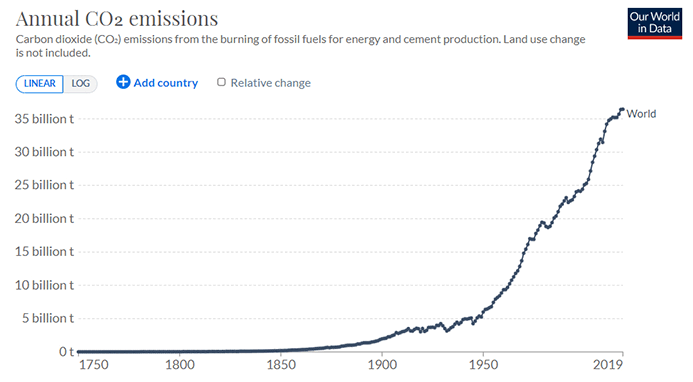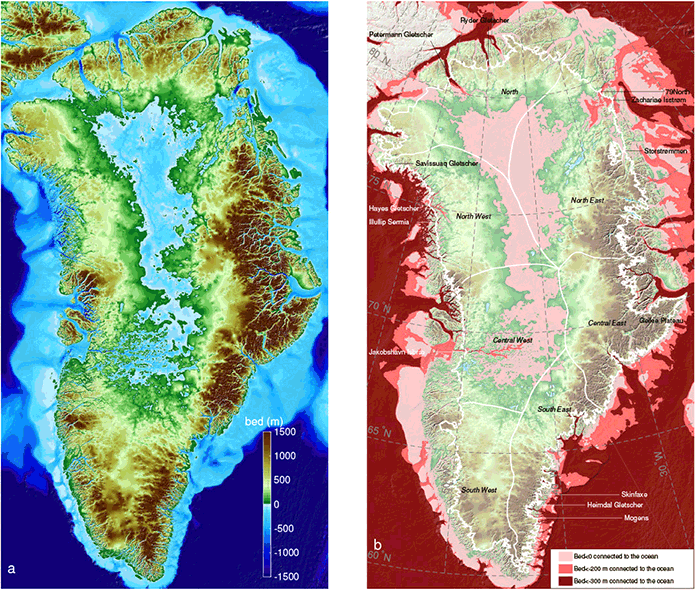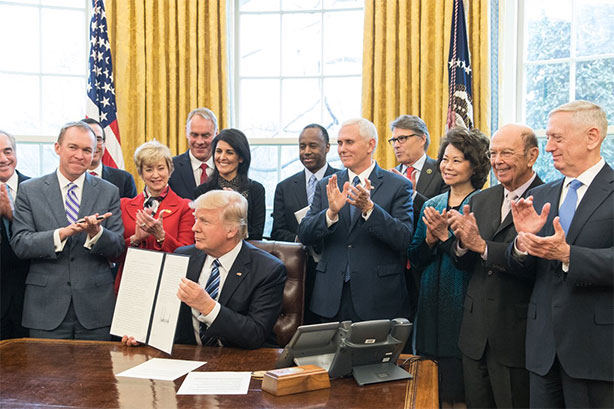Planetary Justice
The fifth Scotia Group dialogue, hosted by the International Bar Association (IBA), sharpened the focus on domestic legal systems
To see what Scotia is aiming at here, we should take a moment to recap the discussion in the previous dialogues. These covered a broad range of topics, expressed by a broad range of voices, but all the same formed a definite argument about the best way to approach climate change.
One strand of this argument has been that the issue is too important to be left to politicians. This is not an attack on politics as a profession; it’s merely an acknowledgement that environmental issues don’t win elections, and governments have to deal with many domestic interests and constituencies, including those lobbying hard for industries that are responsible for greenhouse gas emissions.
The proof of this is the lack of progress in halting the rise of global emissions. In the 30 years that followed the 1992 Rio de Janeiro Earth Summit, more carbon dioxide was added to the atmosphere than in the previous two centuries.
This year, we are on course to release another 1.5 billion tonnes – the largest annual rise since 2010.

Our World in Data tracks the global output of carbon dioxide from the industrial revolution to 2019 License link
The Catch-22 is that although national governments may be institutionally unable to tackle climate change, they are the only actors who can, since any effective plan will have to put in place laws and regulations, and make use of other levers available only to a public authority, such as taxation, subsidies and publicly funded infrastructure. It’s possible that sub-national governments may take on some of these functions, but they will not be able to shoulder the whole of the burden.
The question then becomes how governments can be made to give cuts in greenhouse gases the priority that they deserves; how can politicians be constrained to develop and implement policies that respond to the consensus among scientists that we are
“shuffling towards a cliff edge, taking with us much of the fauna that we share the Earth with”
to quote a contributor to our fourth dialogue.

A University of California at Irving map of the shrinking Greenland Ice Sheet (UCI) License link
The answer to this has to involve the domestic legal system. A court is the only institution that is outside government yet has the power to review its policies and declare them to be unlawful. So, the question becomes how courts can best be used to carry out this job. As our past two dialogues have made clear,
the key is to open them up to activist groups who have the energy, resources and motivation to force politicians to act rationally.
So, the fifth dialogue was a detailed examination of how this can be done. Here Scotia was able to harness the experience and expertise of the IBA, which has thought through exactly how the justice system can be repurposed to be a defender of the collective rights of humanity in general, and the young in particular.
Who we’re dealing with
The IBA is made up of 80,000 lawyers in 170 countries, so it has the size and range required to tackle a planetary problem. According to Mark Ellis, the IBA’s Executive Director, a lecture delivered by former Irish president Mary Robinson to its 2012 conference prompted 10 years of work on doing just that.
More specifically, the association formed the Climate Change Justice and Human Rights Task Force, and this has made important contributions to the struggle, beginning with 2014’s Achieving Justice and Human Rights in the Era of Climate Disruption, which presented a critical survey of international, regional and domestic legal frameworks, and identified opportunities to improve the way they deal with climate change.
One aim was to look at the need for reform from the point of view of justice and human rights, rather than simply trying to find a politically acceptable balance between scientific predictions and economic consequences
(and this is very much Scotia’s approach as well).
Another task force publication was a kind of handbook for troublemakers – more formally, a “model statute” for those wishing to challenge a government’s failure to protect the environment. And it was the correct use of this publication that was the focus of the dialogue.
The legal landscape
Before moving on to that subject, the meeting heard from Sara Carnegie, Director of Legal Projects at the IBA, and the moderator of the session.
Sara Carnegie
Sara is a barrister with more than 20 years’ experience in the criminal justice and public policy sectors. Most of her career has been spent working for government, most recently as Director of Strategic Policy at the Crown Prosecution Service. She led the legal teams on two public inquiries, one into the death of Iraqi hotel receptionist Baha Mousa and another into the UK’s involvement in extraordinary rendition. She has also spent several years as a legal and policy adviser to the Senior Presiding Judge and Lord Chief Justice of England and Wales.

She discussed a report on the state of climate change litigation around the world, published in July by the Grantham Research Institute on Climate Change and the Environment at the London School of Economics. This showed that there have been 1,006 climate-related cases since 2015, compared with 834 between 1986 and 2014.
What stimulated to this surge in litigation was, of course, the Paris Agreement signed at COP21. This created a binding treaty for 196 countries, each of which committed itself to draw up a national plan to cut carbon emissions. And it was the treaty and the subsequent plans that gave campaigners a legal peg to hang climate justice claims, and resulted in the landmark decisions in Urgenda, Milieudefensie and Sharma, among others (see dialogue three and dialogue four for more on these cases).
One striking aspect of this civil society activism is that it has produced new types of plaintiff and new types of argument, for example, young people who are making cases based partly on intergenerational equity. And trials in one jurisdiction are prompting activists to come forward in others, with their legal teams learning from each other along the way. “Almost every legal system contains tools that can be used to hold governments to account for insufficient action,” Sara noted. “The IBA identified legal hurdles and issues in its 2014 report, then the 2020 model statute described how they could be overcome” – in effect, stocking a legal toolbox for lawyers around the world.
ALMOST EVERY LEGAL SYSTEM CONTAINS TOOLS THAT CAN BE USED TO HOLD GOVERNMENTS TO ACCOUNT FOR INSUFFICIENT ACTION
The result is that it is becoming easier to mount challenges to governments that fail to take climate change sufficiently seriously, as well as companies that are doing much the same. They can also help lawyers to better advise their clients and draft contract clauses that address environmental issues or finance clean energy schemes.
“The issue of environmental, social and governance barely registered a few years ago, and are now in every legal and business communication I see”
A map of the world
The second speaker was Suzanne Spears, who began with a global tour of the Paris signatories and what they have committed themselves to achieving.
Suzanne Spear
Suzanne is a partner in the International Arbitration Group and co-head of Global Business and Human Rights at London-based law firm Allen & Overy. She is a leading public international law specialist, and is recognised as one of a small number of practitioners who are expert in the field of business and human rights (BHR) law. Suzanne is also an Associate Professor of Law at Notre Dame University, where she teaches international arbitration and BHR law.

The good news is that 137 countries have so far set targets for reaching carbon neutrality. The most common date is 2050 – around 90% of states have picked that deadline
but others have been more ambitious. The microstates of Bhutan and Surinam have already hit zero, and Uruguay and the Maldives hope to get there by 2030. Elsewhere, Finland has named 2035, Austria 2040, and Germany and Sweden 2045. On the other hand, China has chosen 2060 and Australia and Singapore have set no target at all. “We find that 73% of global emissions are covered by net zero targets,” Suzanne commented, “but setting goals is the easy part. What’s really important is how deeply committed each country is to its pledge. What we want to see is these pledges transformed into legislation. That has happened, or is under way, in Sweden, Denmark, France, Hungary, New Zealand and the UK, as well the European Union itself.
Climate change cases up to February 2020 (Norton Rose Fulbright) License link
The bad news is that more than 72% of pledges have not been written into domestic law. In its 2018 report, the UN Intergovernmental Panel on Climate Change (IPCC) warned that to achieve the Paris Agreement’s target of limiting the mean global temperature rise to 1.5°C, we have to reduce global emissions 50% by 2030. Unfortunately, almost 75% of the climate pledges made so far are insufficient to meet that goal.
In particular, the top four emitter – China, the US, India and the EU – which together contribute 56% of the global total, are not doing enough. Clearly, COP26 is, in the world of US climate envoy John Kerry,
our “last best hope to get the world on track to avoid runaway climate change and a climate catastrophe”.
Kerry’s sentiment was scientifically confirmed by the findings of the IPCC’s August report, which laid out the evidence that emissions are changing the climate in unprecedented and irreversible ways. And it was emotionally confirmed
by a global poll of 10,000 young people, which found that almost 56% of them thought humanity was doomed.
All of which points to one clear aim for COP26: to persuade governments to define in quantifiable and legally binding terms what they propose to do over the next 10, 20 and 30 years. This is not a road map; it’s an escape route. It’s important not just because that’s what states ought to be doing anyway. It’s important because it will, in effect, allow courts to democratise the struggle against climate change and environmental degradation.
LEARNING FROM LOSSES
That said, there are signs that courts may be willing to come to conclusions based on general legal principles and human rights provisions.
The Urgenda case was the first in the world in which citizens established that their government has a legal duty to prevent dangerous climate change.
One of the remarkable things about it was that there was no clear statutory provision to interpret. Rather, the Hague Court of Appeal upheld a lower court’s judgment against the Dutch government based in part on articles 2 and 8 of the European Convention on Human Rights, which protect, respectively, the right to life and the right to family life. This, Suzanne said, indicates a “greening” of human rights law.
The Urgenda case ran between 2015 and 2018. Since then, plaintiffs have brought a number of successful actions in Pakistan, Columbia, Germany, Belgium and Switzerland, and many more are pending around the world.
There have also been unsuccessful actions, and these are just as helpful in working out legal strategies for plaintiffs and legislative strategies for those hoping to influence the policy-making process. One important example was Juliana et al v The United States of America. This was filed in the Ninth Circuit back in 2016 by a group of young plaintiffs represented by an NGO called Our Children’s Trust. They alleged that the US government and its agencies had knowingly violated their due process rights to life, liberty and property, as well as its own duty to protect “public grounds”, by encouraging and permitting the combustion of fossil fuels.

The US Cabinet, pictured in March 2017. Several members were defendants in JulianaLicense link
This resulted in a complex case that ricocheted around the US legal system and its academic suburbs, before being dismissed on a 2-1 decision in 2020. It was thrown out on the grounds that the plaintiffs lacked “Article III standing”, since the proposed remedy would “necessarily require a host of complex policy decisions entrusted, for better or worse, to the wisdom and discretion of the executive and legislative branches”.
The dissenting judge, Josephine Laura Staton, issued an effective and dramatic opinion in which she noted that the US government accepted as fact that the country had reached a tipping point, and that a concerted response to this was essential, yet was pressing ahead towards calamity.
Another case where the litigants failed was the “People’s Climate Case”, in which 10 families from Europe, Kenya and Fiji asked the European Court of Justice to annul several EU acts as they were not sufficiently stringent on limiting greenhouse gas emissions.
On 25 March 2021 the court dismissed the action. Although it accepted that fundamental rights were at stake, and the scientific evidence was compelling, the court found that the plaintiffs lacked locus standi – the right to use the court to seek remedies – as they were not individually concerned by the European Union’s legislation. As Suzanne put it, “The fact that fundamental rights were at issue did not overcome the procedural hurdle.”
THE HEIGHT OF THE HURDLES
Suzanne concluded by summarising the problems that plaintiffs face when trying to access the court system. These are:
- Standing. Claimants have to demonstrate that they have suffered an injury that is concrete and particularised, and that it is actual or imminent (the US standard). The injury has to be traceable to greenhouse gas emissions and the injury has to be redressable by the judicial branch.
- Causation. Although the 2021 IPCC report established that climate change is being driven by human activity, it remains difficult to pinpoint the effect of particular emitter and connect them to specific events.
- Justiciability. Many courts will balk at taking on an issue that they believe to belong in the political realm, or to be a matter for global agreement.
- Apportionment. Even if the courts accept the science of climate change, it may be hard to apportion liability to a party, state, company or individual.
Clearly, these are stiff tests, and many cases will fall unless governments legislate to provide handholds for claimants to cling to. It may be that the EU’s Green Deal and other statutes will help, but it is essential that COP26 set up effective and measurable targets
that would allow courts to use their straightforward powers of judicial review, rather than the uncertain and arduous path of asserting general human and constitutional rights.
They should also create standards that companies have to meet – such as cutting the carbon they are responsible for, disclosing climate risks to customers and investors, setting out directors’ fiduciary duties and deterring greenwashing.
THE YOUNG LITIGANT’S GUIDE TO CAUSING TROUBLE
The final speaker at the fifth dialogue was David Estrin, a counsel in Gowling WLG’s Toronto office and Co-Chair of the IBA Model Statute Expert Working Group. His talk was centred on how citizens, activists and NGOs can clear the hurdles described by Suzanne.
David Estrin
David has spent four decades as an environmental lawyer, during which time he has combined litigation, teaching, research and writing as well as acting in international environmental arbitrations and human rights tribunals. He is the founding editor of the Canadian Environmental Law Reports and for many years headed the environmental law group at one of Canada’s largest lawyers. He also chaired the IBA’s Environment, Health and Safety Law Committee.

David began by restating the essential fact that governments irked by judicial intrusion into their policy-making prerogatives have only themselves to blame. It is happening because citizens are frustrated by the lack of progress that has been made since Rio ’94: states know what has to be done, and yet they’re not doing it.
“Citizens in general and youths in particular are saying, don’t we have rights? Can’t we go to court and seek justice? As there is no international forum where individuals can present a case, that only leaves domestic courts. Judges are somewhat scratching their head when faced with these actions but are getting quite interested, because, although they don’t always act like it, judges are human. They have children and grandchildren, and they are starting to get the fact that there’s a very dangerous situation out there and no branch of government seems to be doing anything about it.”
Also, people really do have rights, one of which is the right to ask a judge to act when those rights being violated. However, as Suzanne made clear,
the procedures, approaches and assumptions that courts have developed over the past several hundred years are not well suited to this type of litigation, pursued by this type of plaintiff, on these kinds of grounds.
This is the situation that the model statute set out to improve.
“When we at the IBA wrote our first report in 2014 about climate change justice and human rights, we recognised that litigation was not going to be a panacea, but as Urgenda has shown, it’s a powerful tool when everything is laid out for the judge so they can understand the problem and see that they have an opportunity to do something about it.
What we did in this model statute was to try to identify what the procedural challenges were and work out ways to deal with them that made sense in different countries.”
THE VEXED QUESTION OF STANDING
The first issue the group dealt with was standing. Here they had the benefit of having Justice Brian Preston on the team. He is the Chief Judge of the Land and Environment Court of New South Wales, and his suggestion was to attach gelignite to the problem and stand well back. He said: “Why shouldn’t there be open standing? We’ve had it in New South Wales for years, and it hasn’t resulted in courts being flooded with cases. If you want to come into my court and argue something, you’re welcome.”
So, the model stature says:
“Any person may bring proceedings to enforce rights, duties or obligations that pertain to the environment to restrain or remedy a breach of legal instruments in climate change proceedings whether or not any right of that person has been or may be infringed by a consequence of that breach.”
This would have allowed the People’s Climate Case to go ahead, as well as a number of other cases that have fallen at the first hurdle.
It is also close to the treatment of standing in public interest litigation in other jurisdictions. For example, in Canada anyone can bring government-related climate change proceedings if they can establish that they relate to a serious issue, they have a genuine interest in that issue and, if brought by an NGO, they are motivated by a desire to protect public interest.
This approach to standing is beefed up by allowing NGOs to join cases as amici curiæi – friends of the court. This would mirror what happened in Juliana, when the American Petroleum Institute, among others, intervened as defendants in case the government of Barack Obama proved insufficiently vigorous in fighting off the challenge.
DEALING WITH DENIERS
Article 6 of the model statute seeks to pre-empt litigants who refuse to accept the scientific consensus, forcing the court to spend an indefinite amount of time ruling on whether anthropogenic climate change is taking place. “What we’ve tried to do,” David said, “is prevent a court from being diverted by somebody trying to argue that you can’t rely on the findings of IPCC – from saying, if we’re a defendant we should be allowed to question all of that and call our own experts.”
CLIMATE CHANGE IS DEFINITELY OCCURRING
Bushfires in Tasmania (unsplash.com/@mattpalmer)
The approach here was to point out that the IPCC is made up of the best climate scientists in the world, they come to their conclusions by way of a massive meta-study of scientific papers and all panel members agree on every sentence of their reports. This makes those reports as close to certain as is possible to be in the natural sciences. Therefore, politicians can write the IPCC’s findings into their judicial systems, and courts are clearly justified in taking judicial notice of the IPCC’s conclusions without calling expert witnesses to interpret them.
Therefore the model statute states that courts should take the IPCC’s findings as prima facie proof that climate change is occurring
This means that if a party wishes to challenge that view, it should have to get the permission of court to do so – and this will not be granted unless they can demonstrate a reasonable prospect of success, that it won’t unduly delay progress with the substantive claim, and they are willing to the bear burden of proof and pay the costs of the other party’s witnesses.
Another important consideration, also related to certainty and doubt, concerns the judging of risk and standards of proof. The argument here is that a judge should bear in mind the IPCC’s warnings before making decisions about a case. They should, for example, consider the consequences of throwing out a case because litigants lack standing. They should be thinking about what the consequences are if the threats being talked about come to pass. Scientific certainty is both a theoretical and a practical impossibility.
What can say for sure about climate change is that the lack of absolute certainty should not be used as a reason not to take action to prevent, mitigate or adapt to it.
This is the precautionary principle.
FURTHERMORE …
Another issue that is on the mind of any potential litigant in any case is costs, and the model statute attempts to reduce the chilling effect of legal fees on public interest litigation.
David said: “We provide examples from other countries where this is done through orders that the judge can make in advance to put a cap costs, or advance cost orders that require the government to give money to the plaintiff. Then there’s cost shifting, and this is perhaps the most useful.
This is an order that a government pay the plaintiff’s costs regardless of who wins the case, since litigants should not be penalised for advancing a public interest issue.
THE FINAL ELEMENT
The final element of the statute that David talked about was restrictions on the defences that governments can mount against a litigation. There are three of these, and they are as follows:
The what about defence. This is when a government argues that it is not the only country in the world emitting carbon, and to be effective, any order would have to control the behaviour of 150 other countries.
The insignificance defence. Used to argue that a given country’s carbon is a small part of the planetary picture. In Urgenda, for example, the Dutch government argued that the Netherlands was responsible for 0.05% of total emission, so an order would have no effect on climate change.
The not your concern defence. This is where a defendant argues, as in Juliana and Urgenda, that the dispute is a matter for the political, rather than the judicial, branch.
The Supreme Court of the Netherlands set out the relationship between the branches of government in a lawful state (Bas Kijzers/Rijksvastgoedbedrijf/Public Domain)
David noted that all three levels of court in the Netherlands rejected all three arguments. The Supreme Court commented that under the Dutch political system, decision-making on greenhouse gas emissions belongs to the government and parliament, and they have a large degree of discretion when doing so. But it is up the court to decide whether, in taking those decisions, the government and parliament have remained within the limits of the laws by which they are bound. “This mandate to the courts to offer legal protection even against government is an essential component of a democratic state under the rule of law.” And in the Netherlands, that includes staying within articles 2 and 8 of the European Convention on Human Rights.
To summarise once more,
the model statute presents 23 articles tailored to specific jurisdictions, as well as 25 pages of background and commentary on the existing challenges. There are 227 endnotes containing a wealth of resource materials for people who really want to get into the legal details.
Altogether, it goes a long way to setting the ground rules for climate change litigation. It minimises the opportunities for defendants to delay and obfuscate, it clarifies the vexed issue of standing, the burdens of proof, the chilling effect of costs, the rules on disclosure and the use of environmental impact assessments, et al.
The Climate Majlis
As ever, the public discussion element of the conference was followed by a closed-door majlis session, which on this occasion was taken up with discussions about Scotia’s planned Statement of Urgency, which meant there were fewer potential action points than in previous dialogues. Nevertheless some excellent suggestions were made …
THE BULLET POINTS
- Investment and development institutions such as the World Bank, the EBRD and the Asia Infrastructure Investment Bank should be encouraged to use their large infrastructure funds to prioritise projects that cut carbon and all projects should be vetted for sustainability.
- Multilateral institutions should draw a tighter connection between human rights, judicial systems, crimes against humanity and the treatment of the environment.
- We should acknowledge the connection between climate change and food security. It is sometimes suggested that climate change is more important, but there are 800 million people living in poverty, and the issues must go hand-in-hand. For example, $1 trillion of food is wasted every year. If we take care of food losses we decrease global greenhouse gases by 8%.
IF WE TAKE CARE OF FOOD LOSSES WE DECREASE GLOBAL GREENHOUSE GASES BY 8%
- It is too late to form new multilateral institutions, but we can use the ones we have with greater agility and effectiveness. For example, the G20, which includes the Western industrialised nations as well as China, Russia, India, Brazil and South Africa. It has responded to the challenge of climate change, and is collectively responsible for 90% of global emissions.
- We can also extract more value from the UN institutions. We have around 17 carbon pricing and emissions trading schemes around the world, but there is no overall system of governance and coordination. There is an area when the G-20 could step in and make a difference.

